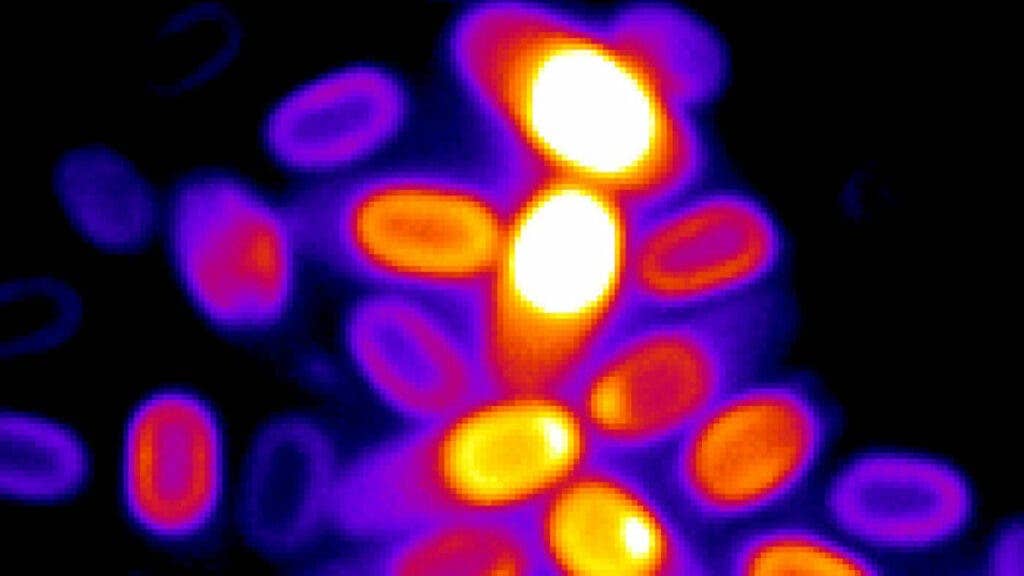
Bacteria were the first complex life forms on Earth, having first appeared more than three billion years ago. They’re also some of the most resilient, being capable of radically changing their metabolism to enter a dormant state that allows them to survive very long periods in which they stop most of their biological activity.
In one extreme case, researchers in the US and Japan found deep-sea microorganisms that had laid dormant for more than 100 million years. When the extracted microbes were studied in the lab, researchers found the bacteria started to grow even though they were deposited during a time when dinosaurs were still alive.
Dormant bacteria, known as spores, aren’t just able to come back to life after a long time, they can withstand extreme pressure, temperature, and even outer space.
That’s extremely remarkable, but also quite frightening. What if we resurrect a dormant highly dangerous pathogen that could make the coronavirus look mild by comparison? As temperatures rise due to climate change, such a prospect is becoming increasingly likely as the thawing permafrost is fracturing and disappearing, potentially exposing billions of tons of carbon and countless species of ancient dormant bacteria.
This is why it’s paramount we learn more about how bacteria both enter dormancy and spring back to life. While scientists have known for some time that hydration and a restart of metabolism is what brings bacterial spores back to life, there are still many unknowns. One important question is how do these spores actually monitor their environment for favorable conditions when they’re supposedly ‘sleeping’.
The spores that count
This particular vexing puzzle has now been solved by biologists at the University of California San Diego, who found spores retain the ability to evaluate their surrounding environment by using stored electrochemical energy, which works a lot like an electrical capacitor.
“This work changes the way we think about spores, which were considered to be inert objects,” said Professor Gürol Süel, a molecular biologist at the University of California San Diego. “We show that cells in a deeply dormant state have the ability to process information. We discovered that spores can release their stored electrochemical potential energy to perform a computation about their environment without the need for metabolic activity.”
During experiments with dormant Bacillus subtilis spores, the researchers found that the microbes could detect small environmental inputs, such as fluxes of potassium ions. If the sum of these signals exceeded a certain threshold, the spores would exist in their dormant state and resume biological activity.
The spores could detect even short-lived environmental signals that shouldn’t wake them up. But for each of these signals, the spores released some of their stored potassium, and then summed up these favorable events to determine the right time to ‘hatch’.
That’s quite the nifty strategy since you don’t want to expend a boatload of energy, which is already in terribly limited supply, on account of a false positive environmental signal that would trick the spore that it is safe outside and food is plentiful.
According to Süel, this mechanism is quite similar to how neurons operate.
“In both bacteria and neurons, small and short inputs are added up over time to determine if a threshold is reached. Upon reaching the threshold spores initiate their return to life, while neurons fire an action potential to communicate with other neurons,” he says.
Unlike neurons though, which are some of the most energy-dependent biological cells in the human body, the spores can count signals without requiring any metabolic energy at all.
The findings have a number of practical implications since spores are virtually all around us. Some cause food poisoning, while others can cause deadly anthrax. The problem is that spores are resistant to antibiotics so understanding the environmental factors that make them come to life could lead to new drugs that kill the bacteria for good.
There’s also something to be said about alien life, be it on far-away planets or even lingering inside asteroids and other space rocks, waiting for the right moment for their resurrection.
“This work suggests alternate ways to cope with the potential threat posed by pathogenic spores and has implications for what to expect from extraterrestrial life,” said Süel, who holds affiliations with the San Diego Center for Systems Biology, BioCircuits Institute and Center for Microbiome Innovation. “If scientists find life on Mars or Venus, it is likely to be in a dormant state and we now know that a life form that appears to be completely inert may still be capable of thinking about its next steps.”
The findings appeared in the journal Science.






